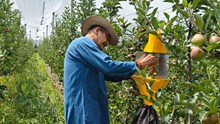
Nestled amidst the elevations of the Indian Himalayan Region, the Kilmora plant has quietly nurtured generations with its healing touch. Locally consumed and traditionally respected, this wild edible fruit is now attracting scientific attention for its potent nutraceutical properties. Commonly found in Uttarakhand and extending to Himachal Pradesh, Bihar, Madhya Pradesh, and even Bhutan, Kilmora is a key part of the region’s biodiversity. Known for its bright yellow flowers and deep purple berries, the plant is emerging as a powerful ally in the quest for natural remedies and sustainable agriculture.
Kilmora: A Medicinal Shrub of the Himalayas
Kilmora, scientifically identified as Berberis asiatica and belonging to the family Berberidaceae, is a spiny deciduous shrub that typically grows between 1.8 to 2.4 meters in height. It thrives at elevations ranging from 900 to 2,100 meters above sea level and is commonly found in regions like Almora, Champawat, Lohaghat, and Devidhura in Uttarakhand.
The shrub is characterized by its trifid spines, ovate to oblong leaves with toothed margins, and small yellow flowers arranged in umbellate racemes. The fruit is an oblong-ovoid berry, edible and mildly sweet-tart in taste. The plant can also be grown as a hedge and is well-suited to mountainous, well-drained soils. Notably, its roots and stems contain key alkaloids such as berberine and palmatine, responsible for much of its medicinal value.
Nutritional Quality
Kilmora is not just a forest fruit, it’s a nutritional powerhouse. Laboratory analyses of the fruit have revealed impressive quantities of essential nutrients and phytochemicals. The following are some key findings:
-
Protein: 6.02%
-
Carbohydrates: 32.91%
-
Total Polyphenols: 30.47 mg/g extract
-
Condensed Tannins: 7.93 mg/g extract
-
Ascorbic Acid (Vitamin C): 31.96 mg/g extract
-
β-Carotene: 4.53 µg/g extract
-
Lycopene: 10.62 µg/g extract
This robust profile positions Kilmora as a highly nutritious fruit, especially beneficial in combating oxidative stress and supporting overall health. It is rich in antioxidants like polyphenols and flavonoids, known to support immune function, reduce inflammation, and delay signs of aging.
Medicinal Properties of Kilmora Plant
Kilmora's value as a medicinal plant goes far beyond its nutritional makeup. For centuries, the roots and fruits have been used in traditional medicine across the Himalayan belt. Here’s how Kilmora benefits human health:
-
Anti-diabetic and Hepatoprotective: The fresh roots are traditionally used to manage diabetes and jaundice. The presence of alkaloids such as berberine enhances insulin sensitivity and supports liver health.
-
Anti-inflammatory and Analgesic: The stem bark, rich in phytochemicals, is used to treat rheumatism and related joint pain. This has been attributed to its natural anti-inflammatory properties.
-
Anti-cancer Potential: Preliminary research indicates that the root extract may contain compounds with anti-cancer activity, although more clinical studies are needed.
-
Mild Laxative: The berries are safe for children and act as a gentle laxative, supporting digestive health.
-
Antioxidant Activity: Studies have shown that Kilmora has powerful free radical scavenging properties. It demonstrated significant activity in DPPH and ABTS assays, suggesting it can neutralize harmful oxidative agents in the body. These antioxidants play a key role in preventing cardiovascular diseases, certain cancers, and neurodegenerative conditions.
-
Chelation and Metal Detox: Kilmora extracts also exhibit metal ion chelating abilities, which help reduce oxidative damage caused by heavy metals.
Where and How It Can Be Cultivated
Kilmora naturally flourishes in high-altitude regions, particularly between 900–2,100 meters above sea level. It is commonly found growing wild in:
-
Uttarakhand (Almora, Champawat, Lohaghat)
-
Himachal Pradesh
-
Bihar (Parasnath hills)
-
Madhya Pradesh (Pachmarhi)
-
Rajasthan (Mount Abu)
-
Bhutan and Assam
The shrub prefers loamy to sandy soil with good drainage and moderate fertility. It can be propagated through seeds or cuttings and requires minimal maintenance once established. Because of its spiny nature, it is also suitable for use as a protective hedge crop.
Farmers in the hill regions could benefit from domesticated cultivation of Kilmora, integrating it into agroforestry systems or as a secondary crop. Its berries, roots, and stem bark can be harvested and processed for nutraceutical use, while the plant itself contributes to soil conservation and biodiversity.
Kilmora is more than just a wild edible, it is a potent medicinal plant waiting to be recognized for its full potential. With significant nutritional benefits, antioxidant properties, and therapeutic uses ranging from diabetes control to digestive support, Kilmora embodies the intersection of traditional knowledge and modern nutraceutical science.
Incorporating this Himalayan treasure into mainstream agriculture and health systems could open up new economic and nutritional avenues, especially for rural hill communities. Further scientific exploration and sustainable cultivation practices will be crucial in bringing this "hidden gem" to wider prominence in India and beyond.
















